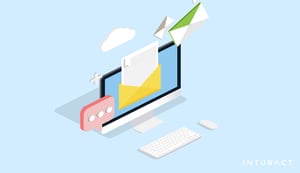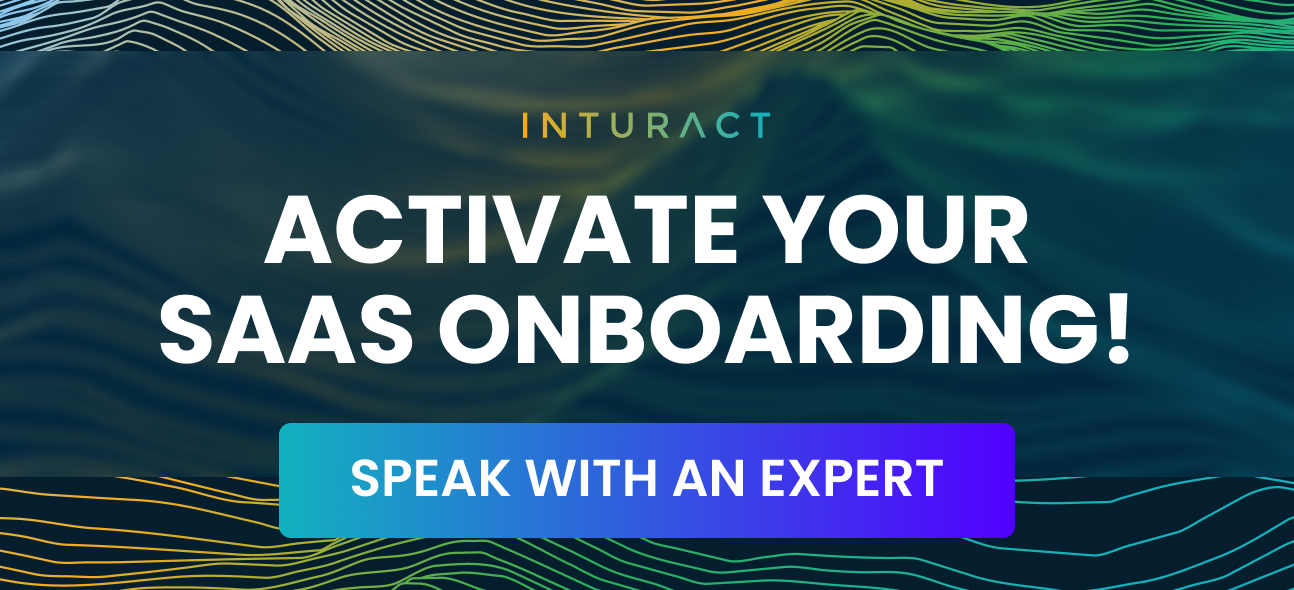Creating a compelling user onboarding email sequence is a pivotal step for SaaS products. It's the first line of engagement, setting the tone for your customer's journey.
As a SaaS product manager or founder, you understand the challenge: crafting an onboarding experience that captivates, educates, and converts. You need to create a journey that aligns with user needs and your business goals.
In this article, we have covered:
- 5 must-have user onboarding emails
- Key strategies for crafting impactful onboarding emails.
Let's dive into the art and science of building email sequences that not only welcome users but guide them to success with your SaaS product.
What are User Onboarding Emails?
User onboarding emails are a series of automated emails sent to new users of a software. These emails play a crucial role in guiding new users through the initial stages of using a product.
Example —
Their main goals include:
- Welcome and Acknowledgment: The first email typically welcomes the user to the service, acknowledging their sign-up or purchase. It's a crucial touchpoint for making a positive first impression.
- Product Education and Guidance: These emails educate users about the product's features and functionalities. They aim to help users understand and start using the product effectively.
- Encouraging Engagement: Onboarding emails often include calls-to-action (CTAs) that encourage users to engage with the product, such as completing a profile, setting up their account, or starting a key feature.
- Value Reinforcement: They reinforce the value proposition of the product, reminding users why they signed up and how the product can solve their problems or improve their situation.
- Feedback Collection: Some onboarding emails seek feedback from users about their initial experience, which can provide valuable insights for product improvements and customer satisfaction.
- Milestone Celebrations: These emails can acknowledge and celebrate user milestones, such as completing a tutorial or using a key feature, which helps in building a positive user experience.
- Reduction of Churn: By engaging users early and effectively, onboarding emails aim to reduce churn rate (users abandoning the service) by fostering a deeper connection with the product.
- Personalization: Effective onboarding emails are often personalized, using user data to tailor the content to the individual's needs or usage patterns.
4 Must-Have User Onboarding Emails
1— Welcome email
Purpose of this email is to make a great first impression, confirm the successful creation of the user's account & get in touch with the user. It sets the tone for future communication and starts building a relationship with the user.
The email from Feedly below is a strong example of a welcome email that achieves several goals: it thanks the user, introduces the product's value, encourages immediate engagement, and provides a personal touch from the company's CEO.
- The message begins by thanking the new user for joining Feedly, showing appreciation for the user's choice and reinforcing the positive decision to sign up.
- It highlights Feedly's value proposition by mentioning its design purpose - to help users keep up with topics they care about without feeling overwhelmed, directly addressing a common pain point.
- The sender acknowledges that the email is automated but adds a personal touch by stating that he personally reads and replies to all responses, which humanizes the brand and encourages users to engage.
2— Feature discovery
This email is designed to inform new users about specific features they may not have explored yet, which is essential for driving product adoption and value realization.
The onboarding email from Wistia shown below focuses on one of the key features of their service – the ability to customize the video player to match a brand's identity.
- The message is concise and to the point, explaining the feature and its benefits without overwhelming the reader with too much information.
- A prominent "Get started" button encourages the user to take immediate action, driving engagement with the product.
3— Re-engagement email
A re-engagement email is crafted to address potential early-stage user issues proactively. It offers support, resources, and a clear line of communication, which can be crucial in retaining users during the initial stages of product adoption.
This onboarding email from Buffer exemplifies a proactive approach to user engagement and problem-solving, which are excellent qualities in user onboarding.
- The email addresses a specific action that the user has not yet taken - connecting social media channels to Buffer. This indicates that Buffer is attentive to user activity and ready to offer help, which can be encouraging for users who may be stuck.
- By acknowledging that the process of connecting a social media channel may not be straightforward, the email shows empathy and understanding of the user's potential struggles.
- Providing a link to the "troubleshoot guides" is a proactive way to offer self-help resources, empowering the user to find solutions independently.
4— Trial wrap up & conversion email
This email serves as a timely reminder towards the end of a user's free trial period. Its goal is to summarize the user's progress, encourage final explorations of the product, and guide them towards the next steps, which may include upgrading to a paid plan.
Key Elements:
- A personal and warm check-in on the user's experience during the trial.
- A list of actions the user should have completed or can still complete to get the full experience before the trial ends.
- Resources or tools (like checklists) that help the user assess their trial experience and encourage product adoption.
- A clear call-to-action for the user to consider subscribing to a paid plan, often incentivized with a special offer or a reminder of the value they’ve received.
- Support options available to assist the user in the decision-making process or to answer any last-minute questions.
This onboarding email from Podia is a great example of this —
The email effectively blends a personal touch with valuable resources, support offers, and a nudge towards taking the next step. It uses positive language, provides clear guidance on what can be done during the trial, and encourages users to make the most out of the remaining time.
This email is crucial in the onboarding sequence as it directly impacts the conversion rate from trial users to paying customers
Best Practices for Creating Saas User Onboarding Email Sequences
Map Emails to the User's Journey with the Product
In SaaS, the user journey is unique and often complex. Your onboarding emails should align with the different stages of this journey. For example, the initial emails could focus on basic setup and feature introduction. As the user progresses, subsequent emails can delve into more advanced features or integrations. This alignment ensures that the content is relevant and timely, based on where the user is in their journey of understanding and using your product.
Highlight Key Features and Use Cases Specific to Your Software
Instead of generic introductions, focus on what sets your SaaS apart. If your software has a unique feature or solves a particular problem very effectively, highlight this in your emails. Use real-life scenarios or case studies to demonstrate how your software can be used in various situations, particularly those that may not be immediately obvious to new users.
Provide Direct Access to Support and Community Resources
SaaS users often need reassurance that help is available if they encounter difficulties. Include links to your support channels, user communities, or forums in your emails. Encourage users to engage with these resources not just for problem-solving but also for learning from other users' experiences. This fosters a sense of community and shows that your company values user support and interaction.
Measure and Iterate Based on User Engagement
Utilize analytics to track how users interact with your onboarding emails. Look at metrics like open rates, click-through rates, and actions taken post-email (like feature activation or tutorial viewing). This data is invaluable for understanding what resonates with your users and what doesn’t. Continuously refine your email content, timing, and frequency based on these insights to ensure your onboarding process remains effective and relevant to your user base.
Integrate Product Interaction Triggers in Emails
In SaaS onboarding, a key goal is to get users actively using your product. To make this happen through emails, you can integrate triggers or prompts that directly link to user actions within the software. For example:
- Feature Activation Links: Include direct links in your emails that, when clicked, lead the user to activate or try out a specific feature within your software. This can be particularly effective for highlighting lesser-known but valuable features.
- Personalized Dashboard Snapshots: If your SaaS has a dashboard, consider including a personalized snapshot of the user's current progress or status. This could be a dynamic element showing their usage stats, completion of onboarding steps, or suggestions for what to do next.
- Interactive Checklists: Embed interactive checklists in your emails where users can mark off completed tasks. These tasks should be directly related to key actions you want new users to take in your software, like completing a profile setup, integrating with other tools, or creating their first project.
- Conditional Content Based on User Progress: Use the data you have on how a user is interacting with your software to customize the content of the emails. If a user hasn't completed an essential step, the email can include prompts or help related to that step. If they've advanced beyond the basics, the email content can shift to more advanced features or use cases.
What's Next?
Crafting effective onboarding emails for a SaaS product is far from a straightforward task of merely listing features and pushing for a paid conversion. It requires a meticulously thought-out strategy, uniquely tailored to resonate with the intricacies and strengths of your product. This strategic approach is pivotal in moving the needle in terms of user retention and reducing churn rates – critical metrics for any SaaS business.
This is where Inturact can help.
As a specialized SaaS onboarding and activation agency, we bring to the table our 15 years of refined expertise and understanding. We don’t just design onboarding emails; we construct comprehensive onboarding experiences that are aligned with your product's unique value proposition and your users' needs. Let us help you create an onboarding process that not only educates and engages your users but also transforms them into long-term, satisfied customers.
Schedule a call today & get started with reducing churn.



